Why Homeowners Should Consider Crew Housing Instead
If you’re a homeowner looking to generate income from your property, chances are you’ve heard about—or maybe even tried—vacation rentals. Platforms like Airbnb and VRBO have made it easy to turn spare rooms, second homes, or investment properties into cash flow.
But vacation rentals aren’t the only option anymore. There’s a growing demand for something different—something steadier, more reliable, and less stressful: crew housing.
Crew housing is exactly what it sounds like—housing designed for construction crews and traveling workers who need a comfortable place to stay during a project. Unlike vacationers, these tenants aren’t looking for luxury or Instagram-worthy decor. They’re looking for practicality, comfort, and consistency.
By the end of this article, you’ll see why crew housing isn’t just an alternative. It’s often the better option for homeowners looking for steady income with fewer headaches.
What Are Vacation Rentals?
Vacation rentals have exploded in popularity over the last decade thanks to platforms like Airbnb, VRBO, and Booking.com. The idea is simple: homeowners list their property, set a nightly rate, and welcome short-term guests.
Pros of Vacation Rentals:
- Potential for high nightly rates during peak seasons.
- Flexibility—you can block dates for personal use.
- Huge marketing exposure on popular platforms.
Cons of Vacation Rentals:
- High turnover. Guests typically stay 2–5 nights, meaning constant cleaning and scheduling.
- Seasonal demand. Summer or holidays might be fully booked, but off-season can leave you empty.
- Guest unpredictability. Some guests are great; others leave damage, noise complaints, or bad reviews.
- Platform fees. Airbnb and VRBO charge commissions that eat into profits.
- 24/7 management. Late-night check-ins, cancellations, or complaints fall back on you (or a property manager you pay extra for).
Vacation rentals can be lucrative—but they’re also a lot of work, and income isn’t always consistent.
What Is Crew Housing?
Crew housing is housing rented specifically to traveling workers—most commonly construction crews, project managers, and skilled tradespeople. These professionals are in town for a specific project and need housing for the duration, which can last weeks or months.
Key Features of Crew Housing:
- Longer stays (weeks or months, not nights).
- Group accommodations (multiple workers housed together).
- Functional amenities (kitchen, laundry, parking for trucks).
- Predictable schedules (early mornings, long workdays, quiet evenings).
With crew housing, homeowners provide a stable, comfortable environment where crews can rest and recharge after demanding workdays. And because workers are vetted through platforms like
Hard Hat Housing, homeowners enjoy steady income without the constant churn of vacation rentals.
Crew Housing vs. Vacation Rentals: The Key Differences
1. Tenant Purpose: Work vs. Play
- Vacation Rentals: Guests are in town for leisure. They’re on vacation, which can mean late nights, parties, and wear-and-tear on your property.
- Crew Housing: Tenants are in town to work. They start early, finish late, and come “home” to rest. Crews aren’t looking to throw parties—they want a quiet, comfortable place to recharge.
2. Length of Stay
- Vacation Rentals: Short stays—often just a weekend or a week.
- Crew Housing: Extended stays—weeks, months, or the entire duration of a project.
3. Income Stability
- Vacation Rentals: Income fluctuates with seasons and demand. Summer might bring peak profits, but winter could leave you empty.
- Crew Housing: Crews need housing year-round. Projects don’t pause because it’s off-season. That means steady income even in months when tourism dries up.
4. Property Wear and Tear
- Vacation Rentals: Constant check-ins and check-outs put stress on furniture, floors, and appliances. Plus, some vacationers treat rentals like hotels—leading to damage.
- Crew Housing: Crews are vetted, working adults who treat the property with respect. And because stays are longer, there’s less constant wear from turnover.
5. Amenities Needed
- Vacation Rentals: Guests expect stylish decor, premium linens, and extras like smart TVs or hot tubs. Success often depends on how “Instagrammable” your space is.
- Crew Housing: Crews don’t need luxury. They need functionality—full kitchens, laundry, parking, reliable Wi-Fi, and real beds.
6. Management Involvement
- Vacation Rentals: Constant communication—answering booking requests, handling cancellations, coordinating cleaners, restocking supplies.
- Crew Housing: With Hard Hat Housing, everything is managed for you—tenant placement, communication, maintenance, cleanings, inspections.
7. Community Impact
- Vacation Rentals: Neighbors often complain about noise, parties, or constant traffic from revolving guests.
- Crew Housing: Crews contribute directly to the community—building schools, hospitals, roads, and homes. They’re working professionals, not weekend parties.
Why Crew Housing Is Better for Homeowners
Now that we’ve compared the two side by side, let’s focus on the benefits crew housing brings to homeowners:
1. Steady, Reliable Income
No more worrying about whether your property will be booked this weekend or what season it is. Crew housing brings long-term bookings that provide predictable cash flow.
2. Lower Stress, Less Work
Forget late-night texts from vacationers who can’t figure out the Wi-Fi. With Hard Hat Housing, we handle everything. You simply hand us the keys, and we take care of tenant placement, cleanings, and communication.
3. Safer, More Respectful Tenants
Crews are in town to work, not party. They’re vetted, professional, and responsible. That means fewer headaches and less worry about your property.
4. Reduced Turnover and Cleaning Costs
With longer stays, you don’t need to clean and reset your property every few days. That saves you money on cleaning services and reduces wear-and-tear on your home.
5. Community Contribution
By renting to crews, you’re directly supporting the people building infrastructure in your community. You’re not just making money—you’re making an impact.
6. Flexibility for Homeowners
Not ready to commit to a long-term lease? Crew housing is flexible. Rent to a crew for the duration of a project, then decide what to do next.
Hard Hat Housing: Your Partner in Crew Housing
So why choose Hard Hat Housing over trying to rent directly? Because we make the process simple, safe, and profitable.
Here’s what we provide:
- Vetted tenants only – Every crew is verified, professional, and in town to work.
- Turnkey management – We handle listings, placement, communication, emergencies, and cleanings.
- Lower hassle – No dealing with constant turnover or short-term guests.
- Better for your property – Crews stay longer, treat the home with respect, and reduce wear from frequent move-ins/outs.
- Steady income – Our bookings are based on project timelines, not weekend getaways.
- Community impact – You’re supporting the workers who build schools, hospitals, homes, and roads.
Vacation rentals had their moment. They can still be profitable—but they’re unpredictable, high-maintenance, and often stressful.
Crew housing, on the other hand, offers steady income, respectful tenants, less hassle, and a positive community impact. For homeowners looking for a smarter way to rent, crew housing is the better option.
And with Hard Hat Housing as your partner, the process couldn’t be easier. You hand us the keys—we take care of the rest.
Ready to make the switch?
Contact Hard Hat Housing today at 859-575-0662, or
fill out this form, and start turning your property into a reliable source of income—while supporting the people who
build the bigger picture.













